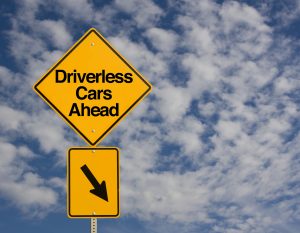On April 24, 2025, the California Supreme Court in New England Country Foods, LLC. v. VanLaw Food Products, Inc., issued an opinion by Justice Lius holding that California Civil Code section 1668 “invalidates limitations on damages for willful injury to the person or property of another.”
Articles Posted in Damages
Bad Facts (Sometimes) Make Good Law – The Worst Texting and Driving Incident Still Does Not Defeat Coverage under NY Law
Insurance agreement language that precludes coverage in CGL policies for “expected or intended” injuries has been analyzed in nearly every jurisdiction, and courts have consistently held that bodily injury or property damage is excluded only if the insurer can demonstrate resulting damage was expected or intended by the insured. In Certain Underwriters at Lloyd’s, London v. Connex Railroad LLC, an insurer-friendly variation of these provisions was called into question in possibly the worst texting and driving scenario imaginable. Still, a California Court of Appeal applying New York law refused to bar coverage.
injury or property damage is excluded only if the insurer can demonstrate resulting damage was expected or intended by the insured. In Certain Underwriters at Lloyd’s, London v. Connex Railroad LLC, an insurer-friendly variation of these provisions was called into question in possibly the worst texting and driving scenario imaginable. Still, a California Court of Appeal applying New York law refused to bar coverage.
Another Appellate Court Holds that Faulty Work Constitutes an Occurrence – This Time Under New York Law
It is axiomatic that in order to obtain insurance coverage a policyholder must first establish that a claim falls within a policy’s insuring agreement before coverage under the policy is triggered.  For construction claims brought under CGL policies, that frequently means showing that the damages at issue constitute “property damage” caused by an “occurrence” (where “occurrence” is generally defined as “an accident”). While this requirement may often seem like a simple factual question, in the context of a subcontractor’s faulty workmanship, the analysis has proven more difficult. Where alleged faulty work causes damage only to the insured’s own work product, is the property damage accidental?
For construction claims brought under CGL policies, that frequently means showing that the damages at issue constitute “property damage” caused by an “occurrence” (where “occurrence” is generally defined as “an accident”). While this requirement may often seem like a simple factual question, in the context of a subcontractor’s faulty workmanship, the analysis has proven more difficult. Where alleged faulty work causes damage only to the insured’s own work product, is the property damage accidental?
Understanding Business Interruption Insurance and Wide-Impact Catastrophes
In the wake of Hurricanes Harvey and Irma, policyholders can expect insurers to put forward strong objections to some of the most consequential claims asserted by insureds. In a recent client alert, our colleagues Joe Jean and Vince Morgan provided insight into business interruption insurance and dealing with the aftermath of wide-impact catastrophes.
Hurricane Harvey and Irma: Is Your Company Prepared for a Disaster?
An unexpected or catastrophic loss can force any company out of business, even if it is insured. You must understand your company’s risks and how your insurance policies cover those risks in order to manage them and maintain stability.
Having the correct insurance in place is only the first step. Property and business interruption insurance policies are often complex, and your suppliers, customers and other business partners’ insurance situation may have a direct impact on you as well. Even if your business doesn’t suffer any direct physical damage to its facilities following a natural disaster or other loss, your customers or suppliers may have, and that could result in what is known as a “supply chain” or “contingent business interruption” loss of revenue and sales. If you are unprepared when a disaster strikes, you may miss out on substantial amounts of insurance coverage to which you may be entitled. The time to prepare is before a disaster occurs. Take the time now to understand your insurance coverage and other risk transfer methods and opportunities. Know your rights. And put a plan in place to protect yourself, your employees, and your property before the loss occurs. Then, if disaster strikes, you’ll be in a better position to make it through and to access your insurance coverage to help restore operations.
“ERAL” or Early? It’s Not a Decision the Insured Must Make
Construction projects—especially those of any complexity—often experience unexpected delays, resulting in loss of use to the owner. Owners sometimes insure against this risk by getting “Soft Cost”  coverage, which covers certain cost increases resulting from project delay (think higher finance costs). Typically, though, when a construction project experiences an unanticipated delay, everyone—the owner, the builder, the subcontractors and suppliers—is interested in getting the project back on schedule. So owners sometime also get “Expense to Reduce the Amount of Loss” (ERAL) coverage, which covers the cost of accelerating the project to get it back on schedule (think higher costs for additional construction crews and overtime). But if you have both “Soft Cost” and ERAL coverage, do they cancel each other out?
coverage, which covers certain cost increases resulting from project delay (think higher finance costs). Typically, though, when a construction project experiences an unanticipated delay, everyone—the owner, the builder, the subcontractors and suppliers—is interested in getting the project back on schedule. So owners sometime also get “Expense to Reduce the Amount of Loss” (ERAL) coverage, which covers the cost of accelerating the project to get it back on schedule (think higher costs for additional construction crews and overtime). But if you have both “Soft Cost” and ERAL coverage, do they cancel each other out?
Insurers Beware: Florida Courts May Award Attorney’s Fees for Any Incorrect Denial of Coverage

Florida is a hotbed for insurance claims, from run-of-the mill auto accidents to pervasive construction defects to post-hurricane business interruptions, and everything in between. Insurance companies are likely to deny many of those claims—whether or not that denial is proper—hoping that their policyholders will be unwilling to spend the time and money required to demonstrate coverage. But with its new decision in Johnson v. Omega Insurance Company, the Florida Supreme Court reminds policyholders that they have a powerful tool against improper denials of coverage—the awarding of attorney’s fees. Continue Reading ›
Hurricane Matthew Requires Immediate Action to Maximize Insurance Recovery
After tearing through the Caribbean, Hurricane Matthew’s path brought it north to the southeastern coast of the United States, bringing evacuations, business closures and damages to the region. In the storm’s aftermath, colleagues Tamara Bruno, Colin Kemp, Peter Gillon, Vince Morgan and Joe Jean discuss important steps to take to maximize insurance recovery following such an event.
Robot Take the Wheel: Insurance Implications of Autonomous Vehicles
The era of the self-driving car has arrived, with the shiny promise of fewer auto collisions—and the inevitable potholes of a transformative technology. Despite the significant concerns raised by a recent accident involving a driver’s reliance on  a partially autonomous automatic braking and steering system on the Tesla Model S—one of 70,000 such vehicles now on the roads—the auto industry is roaring ahead with autonomous vehicles (AVs). Google is testing its driverless cars extensively on U.S. roads; General Motors has teamed up with car-sharing company Lyft to develop a driverless taxi service; and most major automakers will be releasing fully or partially autonomous vehicles in the next five years.
a partially autonomous automatic braking and steering system on the Tesla Model S—one of 70,000 such vehicles now on the roads—the auto industry is roaring ahead with autonomous vehicles (AVs). Google is testing its driverless cars extensively on U.S. roads; General Motors has teamed up with car-sharing company Lyft to develop a driverless taxi service; and most major automakers will be releasing fully or partially autonomous vehicles in the next five years.
California Supreme Court Teaches Stonewalling Insurer a Lesson in Punitive Damages Math.
 When a jury awards punitive damages against an insurance company for bad faith, the maximum it may award is determined based on a multiple of its underlying award of compensatory damages and attorney fees (so-called “Brandt fees”). In a June 9 decision, the California Supreme Court unanimously held that when a judge, instead of a jury, awards the attorney fees, they should still be included when considering the maximum punitive damages the jury may award.
When a jury awards punitive damages against an insurance company for bad faith, the maximum it may award is determined based on a multiple of its underlying award of compensatory damages and attorney fees (so-called “Brandt fees”). In a June 9 decision, the California Supreme Court unanimously held that when a judge, instead of a jury, awards the attorney fees, they should still be included when considering the maximum punitive damages the jury may award.
 Policyholder Pulse
Policyholder Pulse


